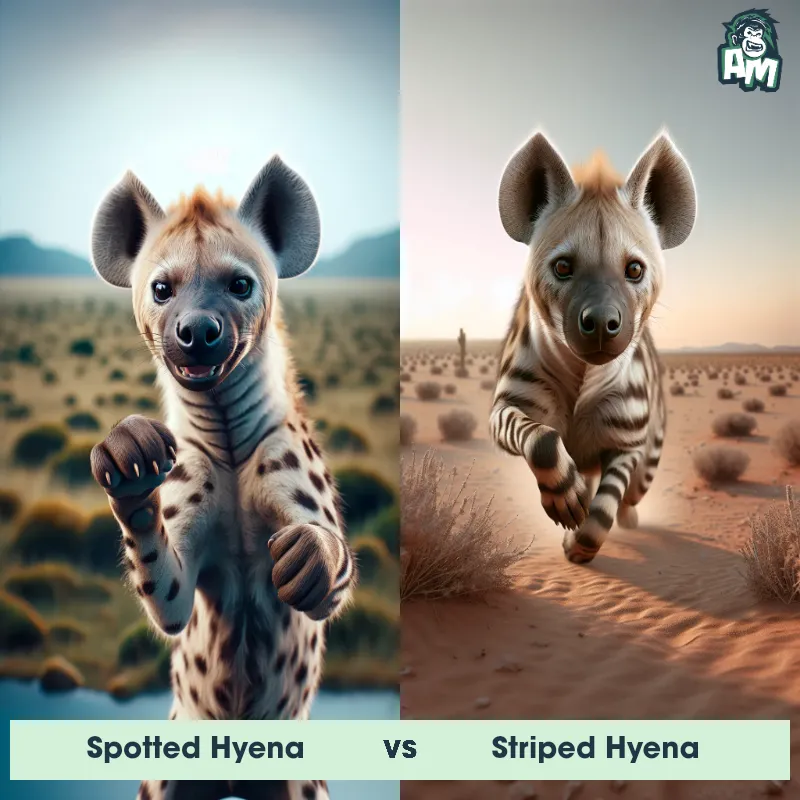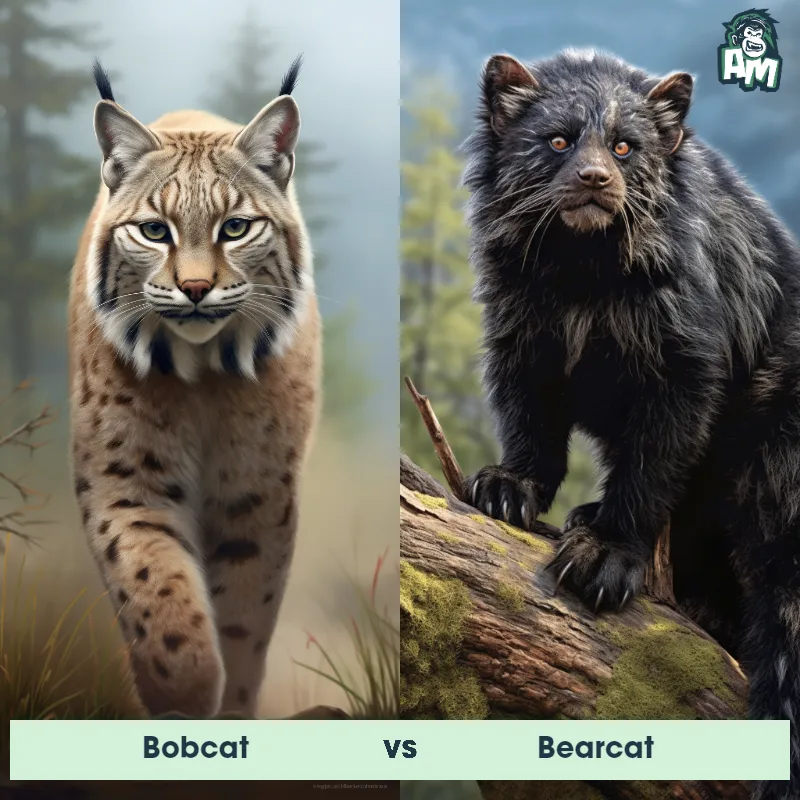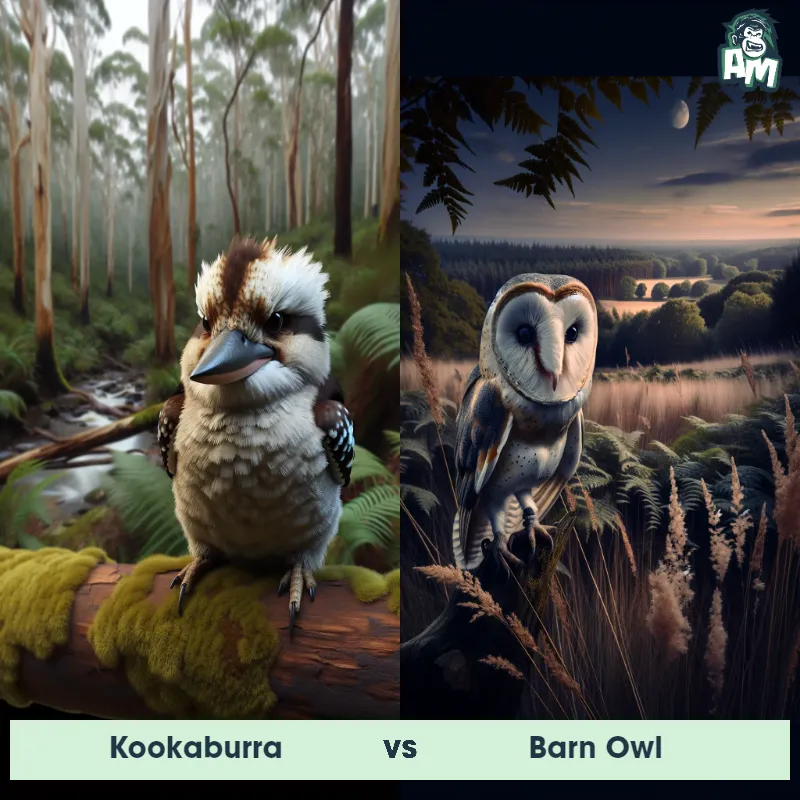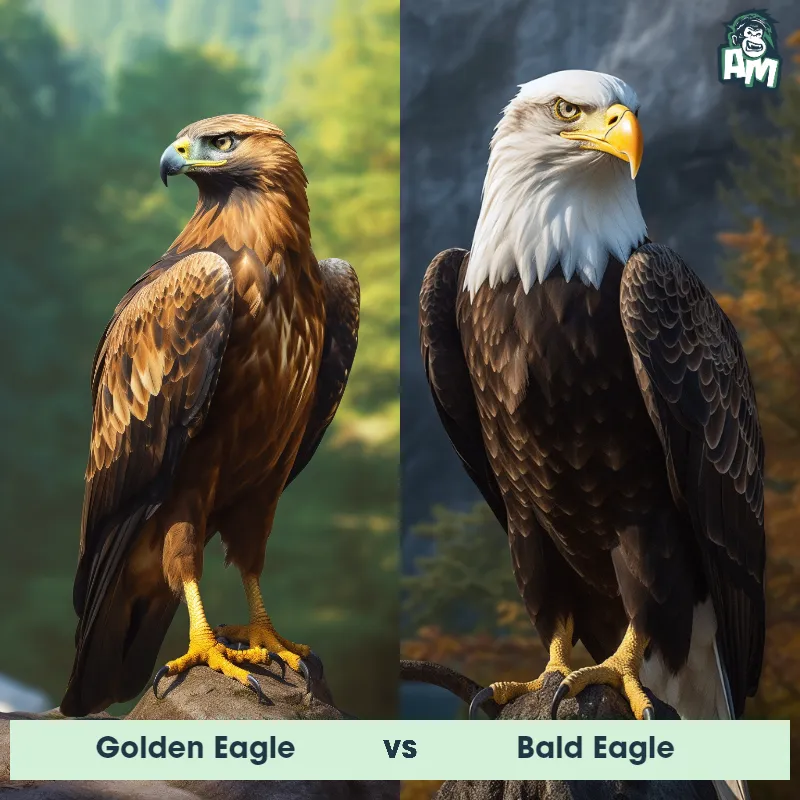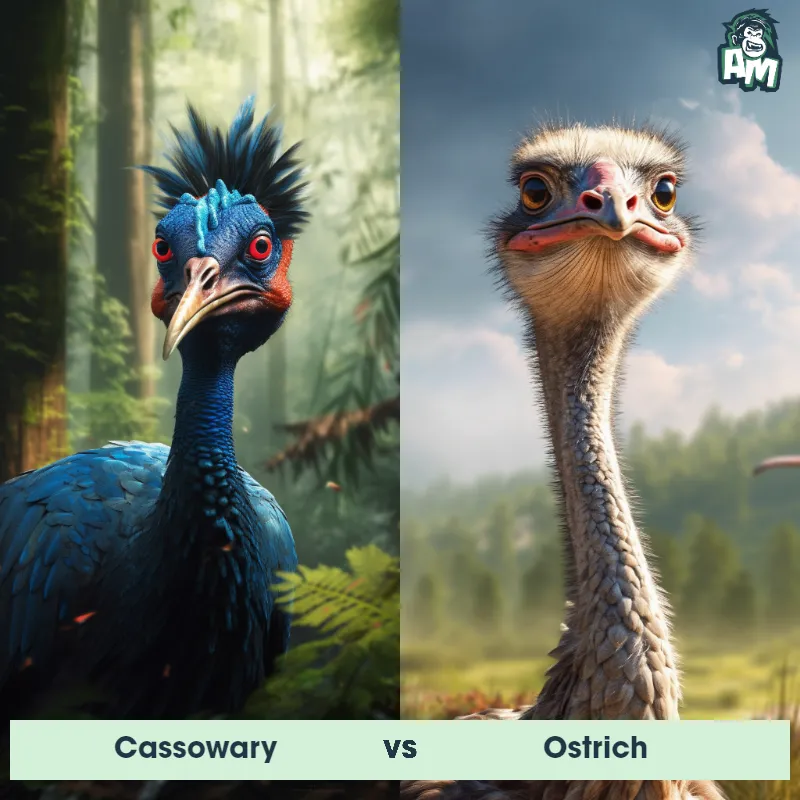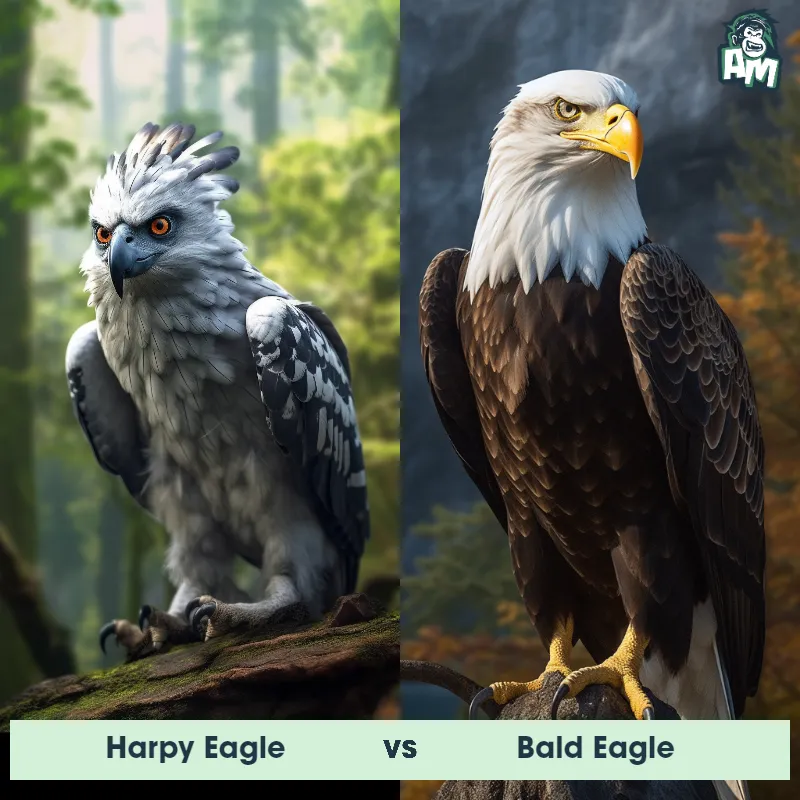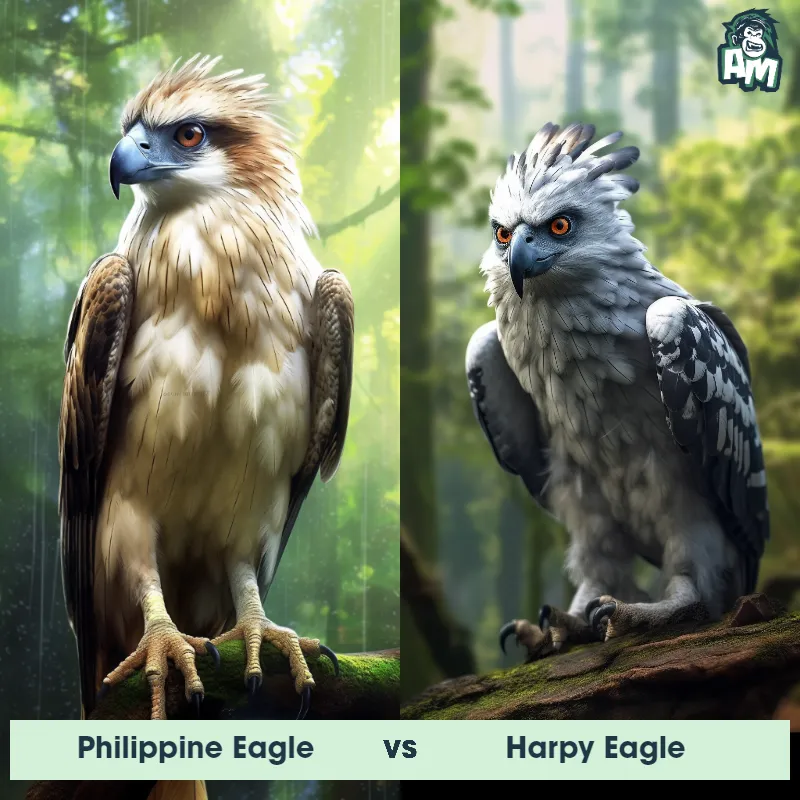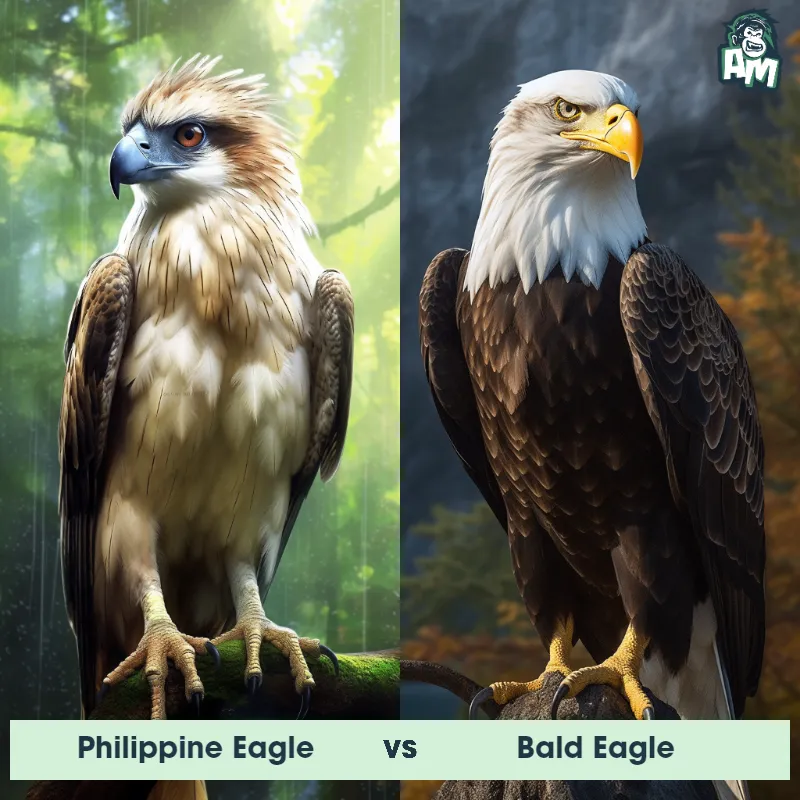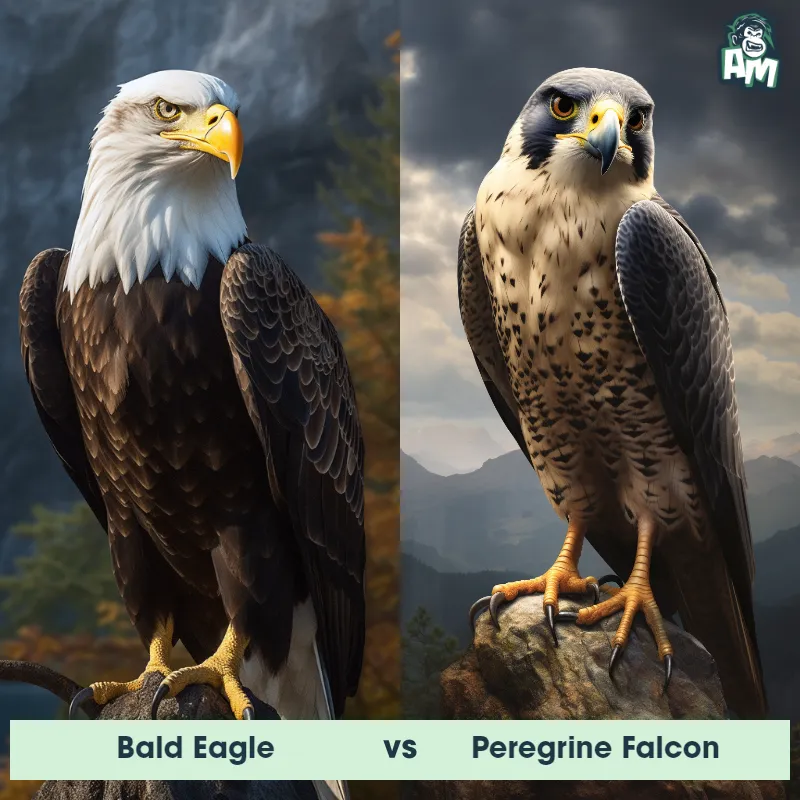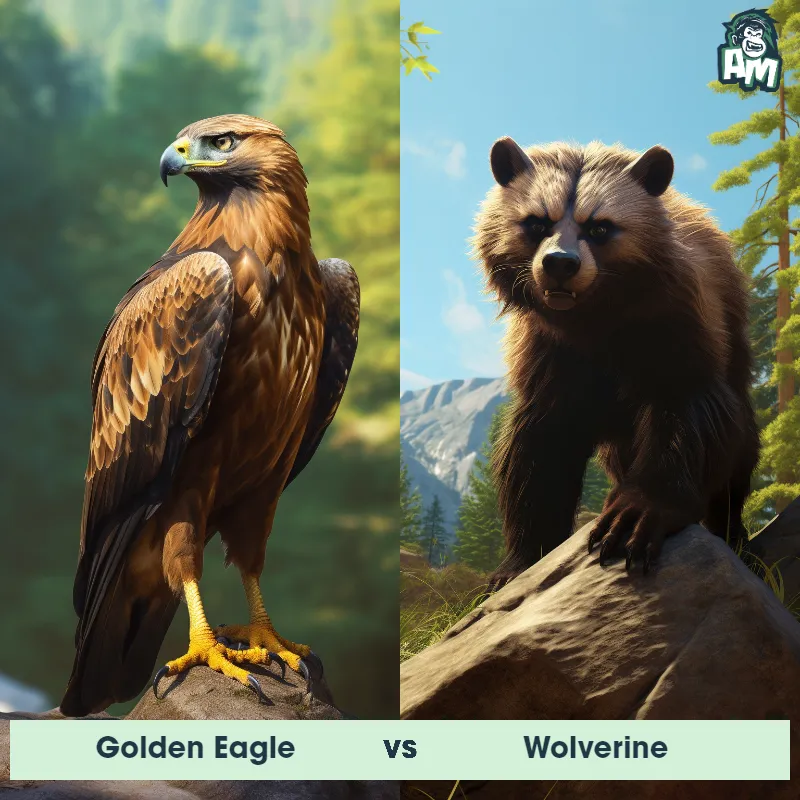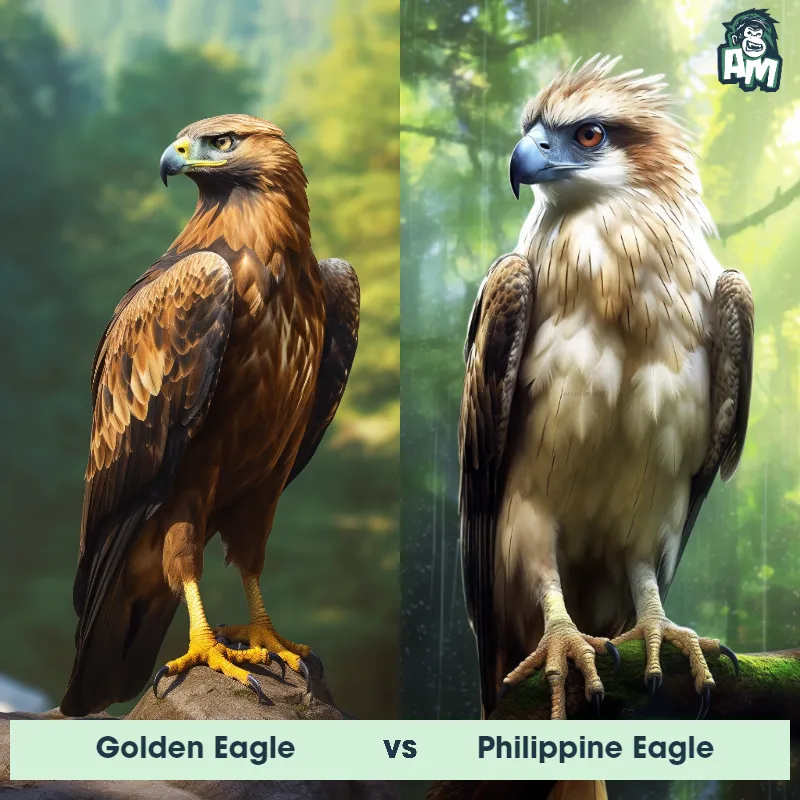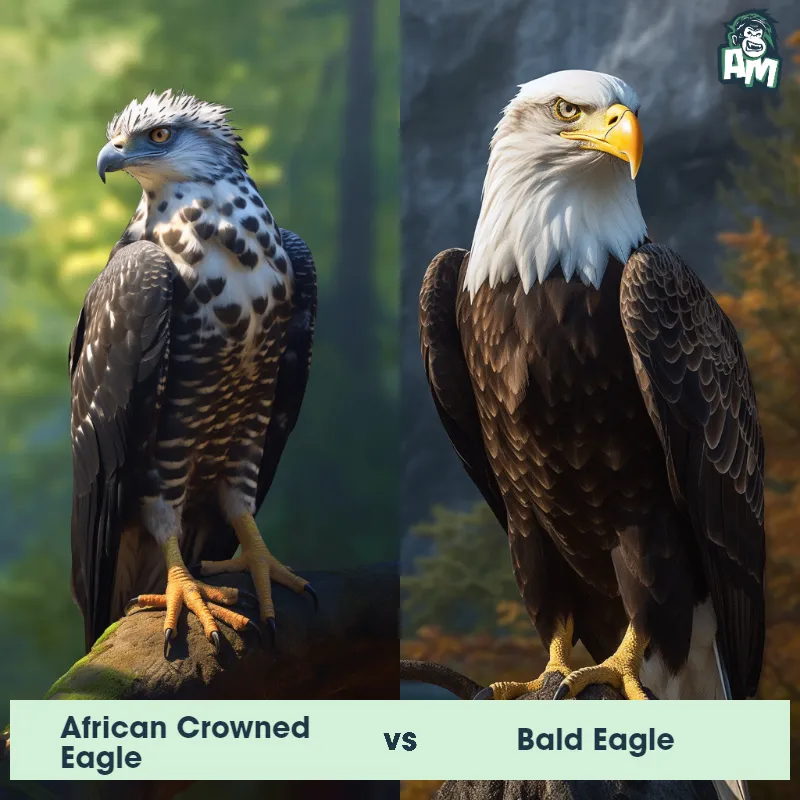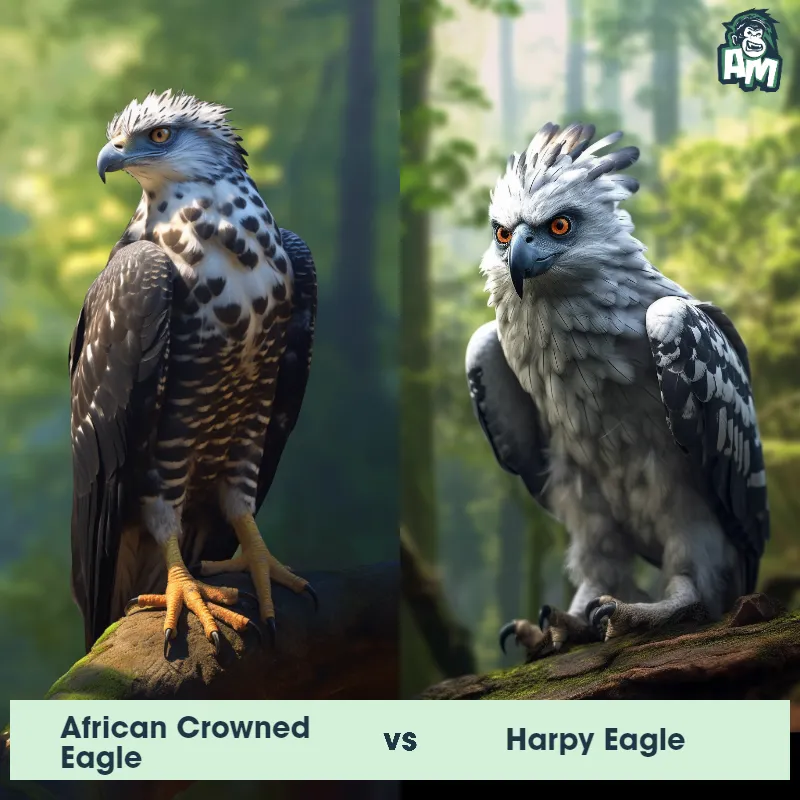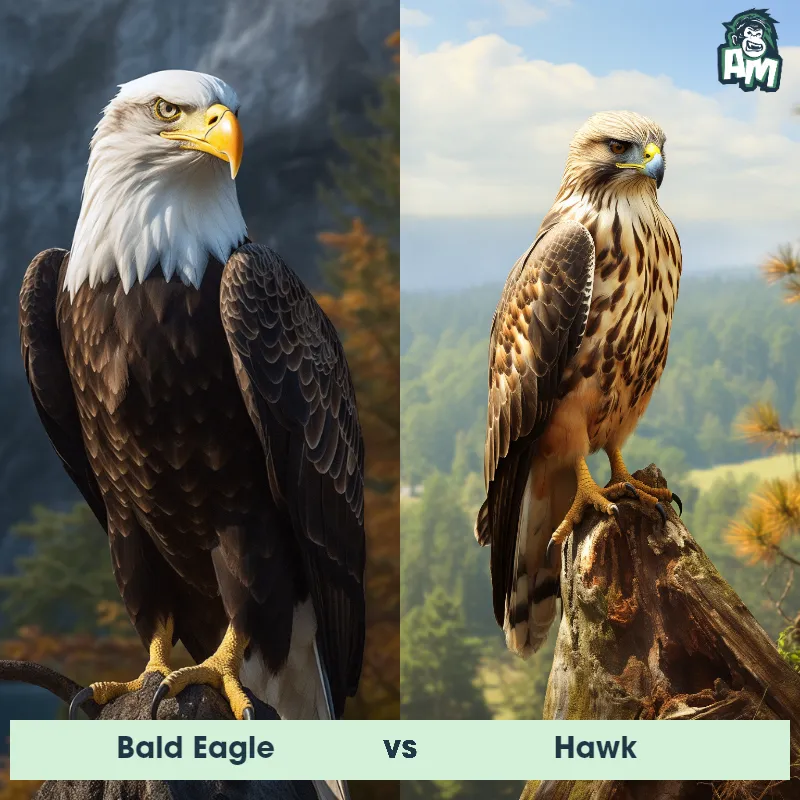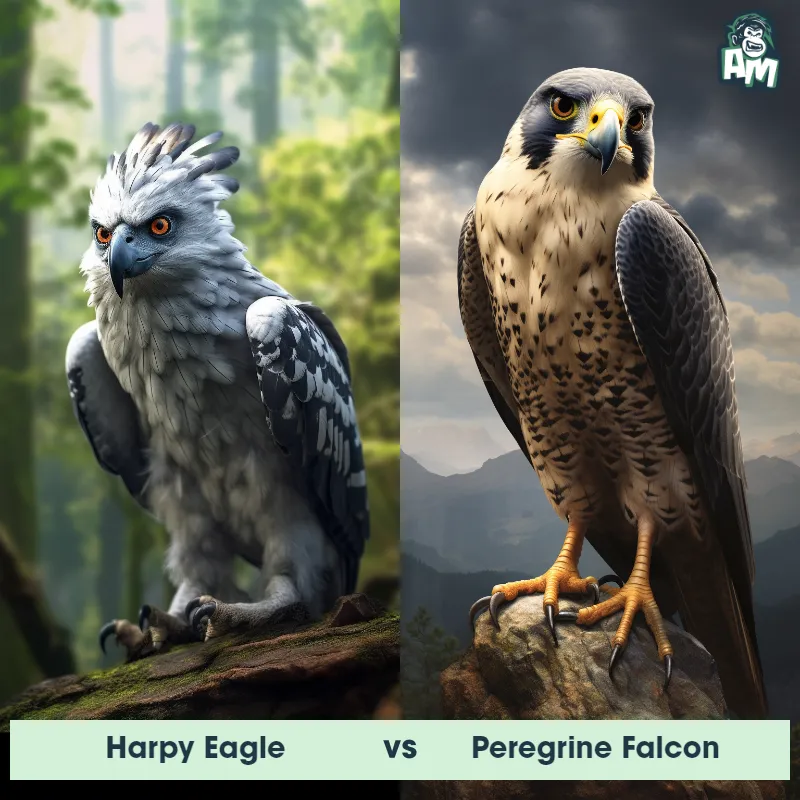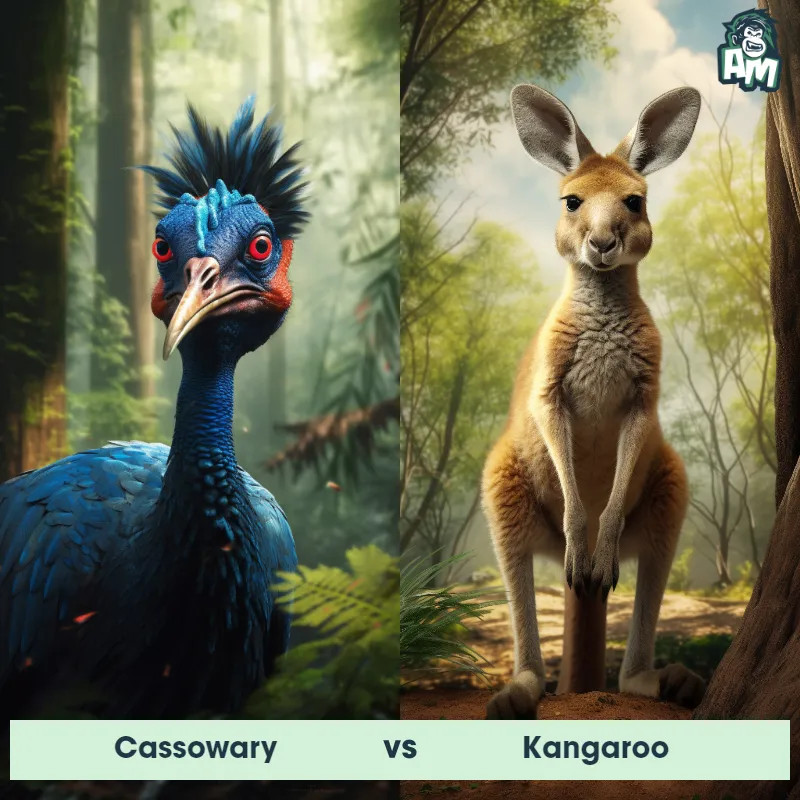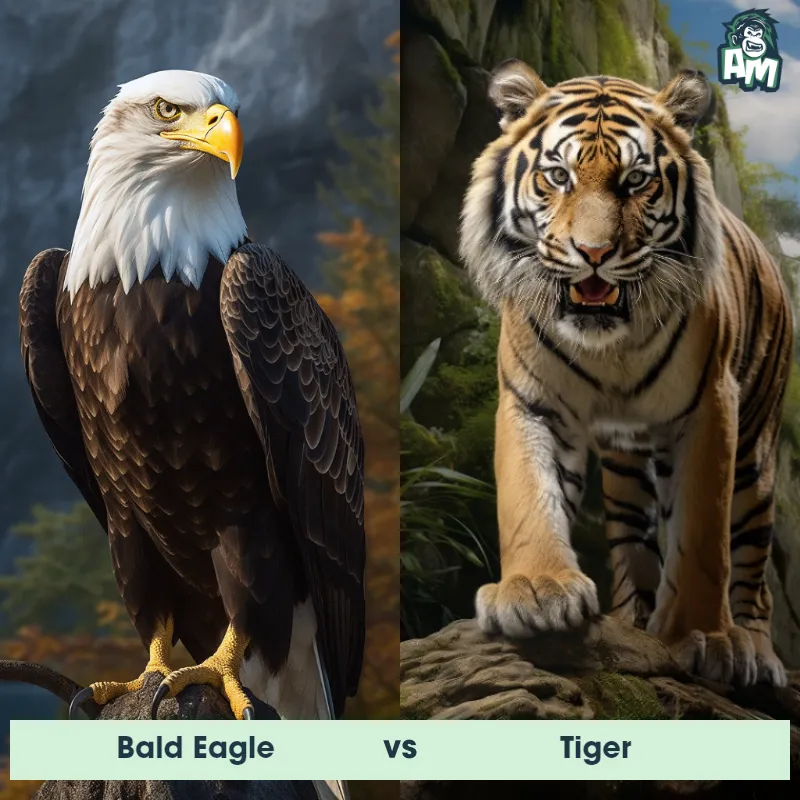Harpy Eagle vs CassowarySee Who Wins
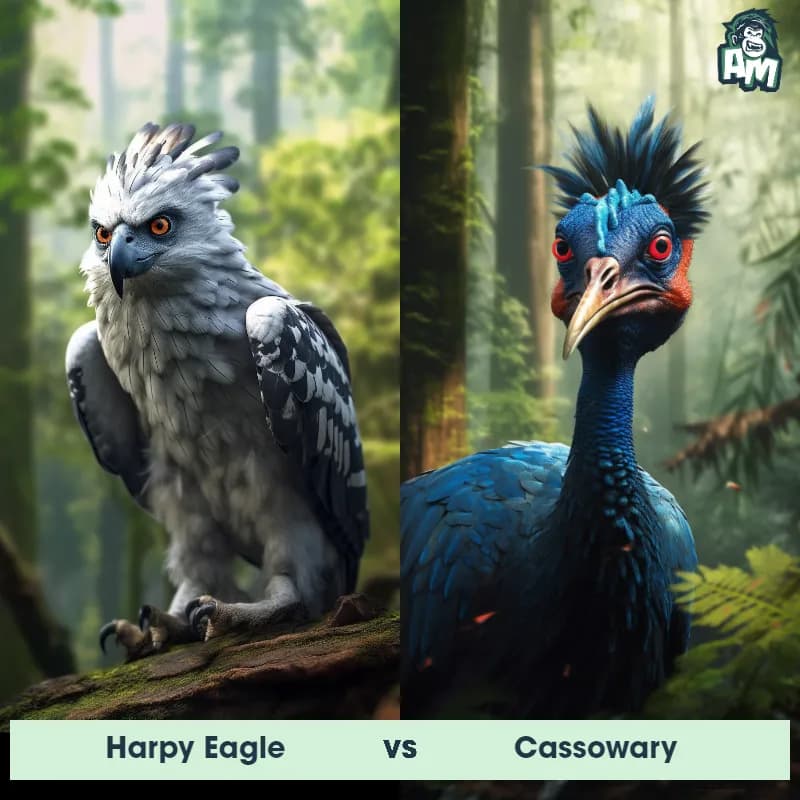
Today, the skies and the earth converge as two of nature's most formidable avian creatures take the center stage. The Harpy Eagle, with its sharp talons and keen eyes, hails from the treetops of the rainforests. Meanwhile, the Cassowary, equipped with powerful legs and a lethal kick, reigns supreme in the dense underbrush. This battle promises to be a dance between the aerial and the terrestrial!
Contender 1: Harpy Eagle
The Harpy Eagle, also known as the American Harpy Eagle, is a large bird of prey found in the tropical rainforests of Central and South America. It is one of the largest and most powerful eagles in the world, with a wingspan of up to 7 feet and weighing up to 20 pounds. The Harpy Eagle has a distinctive appearance, with a gray head, black and white feathers, and a powerful hooked beak.
Fun Fact: The Harpy Eagle is named after the harpies of Greek mythology, which were half-bird, half-human creatures known for their speed and strength.
Contender 2: Cassowary
The Cassowary is a large, flightless bird native to the tropical forests of Australia and New Guinea. They are known for their striking appearance, with a tall, colorful casque on their head, bright blue neck and head, and black feathers covering their body. Cassowaries are also known for their powerful legs and sharp claws, which they use for defense and to navigate through dense vegetation. They are omnivores, feeding on a variety of fruits, insects, and small animals.
Fun Fact: Cassowaries are considered one of the most dangerous birds in the world, with a reputation for being aggressive and territorial. They have been known to attack humans and other animals with their sharp claws and powerful legs, which can deliver a deadly kick.
Matchup Stats
| Harpy Eagle | Cassowary | |
|---|---|---|
| Size | Up to 3.5 feet (106.7 cm) tall | Up to 5.6 feet (1.7 meters) tall |
| Weight | Up to 20 pounds (9.1 kg) | Up to 167 pounds (76 kilograms) |
| Speed | Speed: 50 mph (80 km/hr) | Speed: 31 mph (50 km/hr) |
| Key Strength | Powerful hooked beak | Powerful legs and sharp claws |
| Biggest Weakness | None | None |
Current Votes
Harpy Eagle vs Cassowary
See Who Wins
View More Matches
Looking For More?
Similar Matches
Scientific Stats
| Harpy Eagle | Cassowary | |
|---|---|---|
| Scientific Name | Harpia harpyja | Casuarius casuarius |
| Family | Accipitridae | Casuariidae |
| Habitat | Tropical rainforests | Tropical forests |
| Geography | Central and South America | Australia and New Guinea |
| Diet | Monkeys, sloths, and other small mammals | Omnivorous |
| Lifespan | 25 years - 35 years | 10 years - 20 years |
Key Differences between Harpy Eagle and Cassowary
- Size: The Harpy Eagle is generally larger, with a length of 36-40 inches (91-102 cm) and a wingspan of up to 7 feet (2.1 meters), whereas the Cassowary stands at an average height of 5-6 feet (1.5-1.8 meters) and weighs around 130 pounds (60 kg).
- Plumage: The Harpy Eagle exhibits predominantly gray feathers on its head and upper body, while its underparts are white. In contrast, the Cassowary has black feathers covering its body, with vibrant blue skin on its head and neck.
- Facial Features: The Harpy Eagle has a large, hooked beak that is pale blue-gray in color, with a prominent yellow cere. In contrast, the Cassowary possesses a long, sharp beak that is dark in color, often black.
- Feet: Harpy Eagles have strong, sharp talons that can reach up to 3-4 inches (7.6-10 cm) in length, which they use to catch and kill their prey. Cassowaries also have powerful feet with sharp claws, but their middle claw is exceptionally long and can grow up to 5 inches (12.7 cm), making it a formidable weapon for defense.
- Wings and Tail: Harpy Eagles have broad, rounded wings and a relatively short tail, which aids in maneuverability during flight. Cassowaries, on the other hand, have small, vestigial wings that are mainly used for balance, and their long, strong legs allow them to sprint at high speeds.
- Crest: Harpy Eagles possess a distinctive double crest on their heads, formed by long, dark feathers that can be raised or lowered. Cassowaries lack crests but have a prominent bony casque on their heads, which varies in shape and size among different species.





